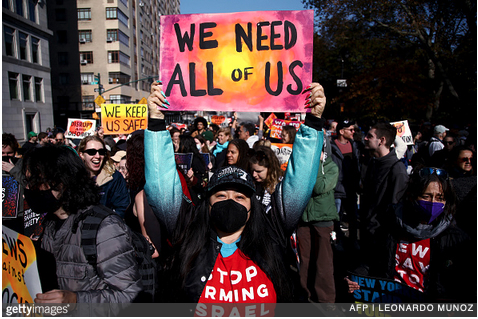About the author: Jim Phillips, Ph.D. has been visiting, research, and writing about Central America since 1974.
He spent several years during the 1980s in Honduras and Nicaragua during the Contra War, and visited refugee camps in Honduras.
He has lived in peasant villages, sugar plantations, and Honduran cities where gang violence is high.
He provides expert witness in asylum hearings involving Honduran nationals in U.S. immigration courts.
He has written many articles and chapters about refugee populations, human rights, and social change in Central America.
His recent book is: Honduras in Dangerous Times: Resistance and Resilience (Lexington Books, 2015, 2017).
He is an Affiliate Professor of Sociology and Anthropology (Ret.) at Southern Oregon University, where he taught for 20 years.
The Truth about Asylum and the “Crisis” at the Border
By James Phillips
Disclaimer: I am not an asylum lawyer, but I have worked for years as an expert witness
with asylum cases in U.S. immigration courts, and I have researched refugee issues for
four decades. I have lived in and researched especially issues of human rights and how
people work for a better society in Central American countries over many years,
including several visits to that region in 2018. I am the author of Honduras in Dangerous
Times: Resistance and Resilience (Lexington Books, 2015, 2017).
• U.S. and international law mandate that people who come to the United States
seeking asylum from danger in their home countries must be accorded a fair hearing
before a duly authorized immigration court. This is true whether they arrive through an
official entry point or simply cross the border into the country and turn themselves in to
an immigration agent.
• A person who enters the United States seeking asylum has a legal right to be here as
long as their asylum claim is being processed. They are not simply illegal aliens. They
are legal asylum seekers. Again, this applies even when they have not entered
through an official entry port. If the U.S. deports such a person without benefit of an
immigration hearing, the U.S. is violating the law—not the asylum seeker.
• International law forbids governments from deporting people back to situations where
it is highly likely that their lives or safety will be in danger. Since the United States is a
signer and party to this international law re. asylum seekers and refugees, this
international law is also U.S. law. There are certain narrow legal exceptions to this.
• Why Cannot Asylum Seekers Apply for Visas before Coming to the U.S.? individuals
fleeing danger or violence in their home country are assumed not to have the time or
ability to apply for documents or visas in their home country, a process that might
entail months of waiting and visits to a foreign consulate even as they are in fear for
their safety. People fleeing their home country do not have the protection of any
country as long as they are fleeing, and so they are assumed to be vulnerable and
their situation is precarious. Hence, they are given certain minimal protections under
international law. It is not practical or possible for people who are in danger for their
lives and security or who have no means of survival to wait around in the very place
where they are in danger. In addition, U.S. law demands that an asylum seeker be
physically present in the U.S. or at the border in order to request asylum. Criticism of
asylum seekers that they are not following the orderly “legal” process is beside the
point.
• Awaiting your turn for hearing in an immigration court in the United States is fraught
with problems. Currently, there are about 750,000 pending cases and only about 350
immigration judges for the entire United States. In a recent asylum case for which I
served as an expert witness, the schedule hearing last month was abruptly postponed
until December of 2020. This is not at all unusual. People wait months or as much as
two years for a hearing. Meanwhile they are generally not familiar with the process, do
not know their rights to a legal counsel, and often do not speak or understand English.
• Governments in both the United States and Central America encourage negative
images of the asylum seekers as criminals or terrorists, or as the pawns of other
interests, in order to provide a basis for denying them entry. Overwhelmingly, these
negative images are untrue. They also deny that asylum seekers are people who
have minds and agendas of their own and are not simply pawns of other.
• Currently, about five thousands Central Americans, some from the recent caravans,
are camped out in and around the border city of Tijuana in Mexico awaiting entry into
the U.S., according to a report in the December 2, 2018 issue of The New York Times,
The U.S. has limited the number of people who can enter the U.S. to begin the formal
process of petitioning for asylum to less than 100 per day. The people themselves,
not the Mexican or U.S. authorities, have devised a system to sign up and receive a
number that determines the order in which people will be allowed to enter.
• Based on the previous point, do the math! People can expect to wait several months
just to enter and ask for asylum. U.S. authorities say limiting the number to less than
100 per day is due to the limited resources at the border to process asylum cases. In
any case, it provides further discouragement to those seeking asylum. This process of
limiting the number of people who can apply for asylum may be judged illegal under
both U.S. and international law.
• Here is the crux of the problem: Why do people leave countries like El Salvador,
Guatemala, and Honduras? Why do parents allow their children to make a long and
dangerous journey (or why do they make the journey themselves) to an uncertain
hope in the U.S.? The answer, as I and others quickly discover as we visit and spend
time in these countries—and as I hear constantly as an expert witness in immigration
cases—is that they consider the conditions in their home countries to be far more
dangerous and difficult that anything they might face by leaving and seeking asylum in
the U.S., or even in Mexico.
• These countries have some of the highest murder rates in the world. Honduras has
the highest rate of femicide (killing of women) in the world. The poverty rate is near 70
percent, with 45 percent living in what international agencies call “extreme poverty.”
Being poor makes them much more vulnerable to rampant gang, drug, and political
violence that is epidemic in their countries. Widespread corruption in the police,
judicial system, and government in these countries makes it almost impossible for
most people to find protection from the violence. Desperation, especially for the
children, is a fact of daily life. Every time people engage in peaceful protest of these
conditions, governments send their trained police and military (many trained and
equipped by the U.S.) to repress such peaceful protest and to target human rights and
other leaders. How can anyone maintain hope and carry on in such a state. especially
if one worries about the future of one’s children? The real crisis is not at the U.S.


